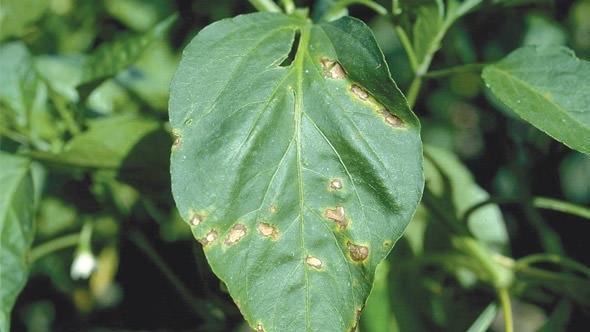Lettuce Downy Mildew Find Has Growers on High Alert in South Florida
Vegetable growers in South Florida are on high alert as lettuce downy mildew was found in the Everglades Agricultural Area for the first time. The discovery was reported by UF/IFAS Plant Pathology Professor Richard Raid.
The timely crop protection alert was passed along to industry stakeholders by fellow UF/IFAS vegetable researcher Gene McAvoy. Key specs regarding identification, survival and spread, as well as management methods were included in the communication as follows:
Downy mildew is a serious foliar disease of lettuce which has a direct effect on yield and quality, as it affects the marketable portion of the crop. In addition to losses in the field, downy mildew’s impact is accompanied by significant postharvest losses. In Florida, yield losses of up to 100% have been reported for individual fields. During the past several years, costs to control downy mildew have risen dramatically.
Lettuce downy mildew is caused by the fungus Bremia lactucae, which is the class of relatively primitive fungi known as the Oomycetes. Other well-known members of this group are Pythium and Phytophthora. The fungus is an obligate parasite, i.e., it is capable of infecting and colonizing only living host tissue.
Downy mildew is capable of infecting any growth stage from seedling to mature plant. Head, leaf, and cos lettuce are all susceptible.
Symptoms of downy mildew appear initially as chlorotic yellow spots on the upper leaf surface. Under favorable conditions, a white cottony-like fungal growth indicative of sporulation may be seen on the lower leaf surface.
During the early stages, leaf spots are often delineated by the veins of the leaf, giving an angular appearance. Lesions become increasingly chlorotic and eventually turn brown. Although downy mildew is most severe on the older outer leaves, the disease may become systemic over time, infecting heads internally. Lesions may also provide entry for secondary fungi such as Botrytis.
The list of fungicides currently labeled for lettuce downy mildew control includes maneb, fosetyl Al, metalaxyl, and several copper compounds.
Recently some newer compounds including Orondis Ultra, Presidio, Previcur Flex, Reason, Revus, and Tanos have been added to growers control options.
Resistance in B. lactucae to the fungicide metalaxyl has been reported in Florida and its efficacy may be reduced. Since labels and recommendations change frequently, growers should consult UF/IFAS recommendations for currently labeled fungicides for downy mildew control in Florida.
With the onset of favorable environmental conditions, fungicide applications should begin at about the 1- or 2-leaf stage and continue throughout the duration of the crop. Applications must be made prior to infection if adequate control is to be maintained. If downy mildew is known to be present in the area, growers should launch a fungicide program immediately.
Given the current susceptibility of Florida cultivars, downy mildew is extremely difficult, if not impossible, to maintain at non-economic levels once a major outbreak has occurred. For this reason, prevention and early detection are of the utmost importance. Because of downy mildew’s ability to spread over large distances in a short period of time, lettuce producers are urged to communicate freely with each other and with extension personnel and consultants in the area. Early notification can be a tremendous help in minimizing control costs and reducing the impact of this disease.
Growers and crop scouts are asked to notify Raid ([email protected]) if they find downy mildew on their operations.










